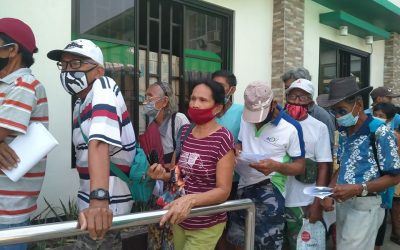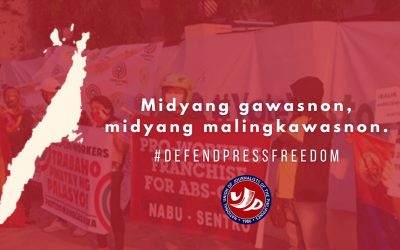Steps toward journalists’ safety amid new emerging threats
by Jonathan de Santos, NUJP Philstar.com chapter
MANILA — A confluence of calamities in 2020 — from the Taal eruption, to typhoons and the COVID-19 pandemic — further highlighted the risky conditions that many journalists in the Philippines have to work with.
In roundtable discussions done with the support of UNESCO, colleagues talked about having to rush to cover the eruption in January 2020 with little support from the news desk.
In many cases, providing protective equipment like face masks is up to individual journalists and informal journalists’ groups organizing swaps and donations.
In many cases, because of shrinking editorial budgets and because contributors are paid per piece used, coverage was done without a guarantee of at least breaking even on travel and other expenses.
Violence and harassment also compounded the risks faced by journalists who already had to contend with limited transportation options and limited access to information on pandemic response.
Threats over critical stories were a common theme in the roundtable discussions, some through anonymous text messages and others over televised Senate hearings into the government’s red-tagging of activist groups.
Three journalists were killed in 2020, bringing the total killed under the Duterte administration to 19.
The latest case, the killing of Ronnie Villamor in Masbate, was attributed by the military to an “encounter” with troops, a narrative that his colleagues rejected, saying coverage of a land surveying activity in Milagros town had been coordinated with the police beforehand.
While many of the respondents in the roundtable discussions said their newsroom had safety protocols against harassment and other threats and other practitioners have already developed their own sets of precautions, many journalists have not had risk assessment and safety training.
Due to movement restrictions during the pandemic and because of a new set of risks that journalists face, the National Union of Journalists of the Philippines, with the help of Internews and USAID, launched an updated version of the Philippine Journalists’ Safety Guide.
The guide, which is available in English, Tagalog and Bisaya, has chapters on Covering Pandemics and Infectious Diseases and on Digital and Information Security.
“More recently, the weaponizing of technology and the digital realm by the enemies of freedom of the press and of expression has given rise to new and insidious cyber threats,” NUJP chairman Nonoy Espina said on the update on digital security.
“This is the reason we constantly need to review and adjust our safety protocols to adapt to the ever-changing milieu.”
The guide also includes the 20 Steps To Safety that journalists can take as soon as they receive a threat.
These include documenting the threat, including the exact wording and circumstances as well as the people involved, if known; letting others know about the threat and asking for help from colleagues to address it; letting the police know, ideally through a written report; and reporting it to the NUJP Media Safety Office (+639175155991).
A video of the 20 Steps To Safety was released alongside the Philippine Journalists’ Safety Guide to make them easier to remember and easier to pass along to colleagues who may prefer video content over ebooks.
While journalism in the Philippines remains a high-risk profession, proper preparation as well as the support of colleagues can at least make being a journalist a little more safe.
More from Diarista 2021
Lawfare as a weapon of intimidation against the Philippine media
MANILA — In the first few weeks of the hard lockdown due to COVID-19 in 2020, local community media outfit Radyo Natin Guimba reported on the long queue of farmers waiting for aid outside the...
State of media 2021: Coming together under crisis conditions
Amid the grim situation, Filipino journalists and media workers have not been taking the attacks sitting down.
NUJP reconvenes Cebu chapter
BACOLOD CITY — The National Union of Journalists of the Philippines has reconvened its Cebu chapter to address and thwart attacks on the local press. Members of the national directorate led the...






